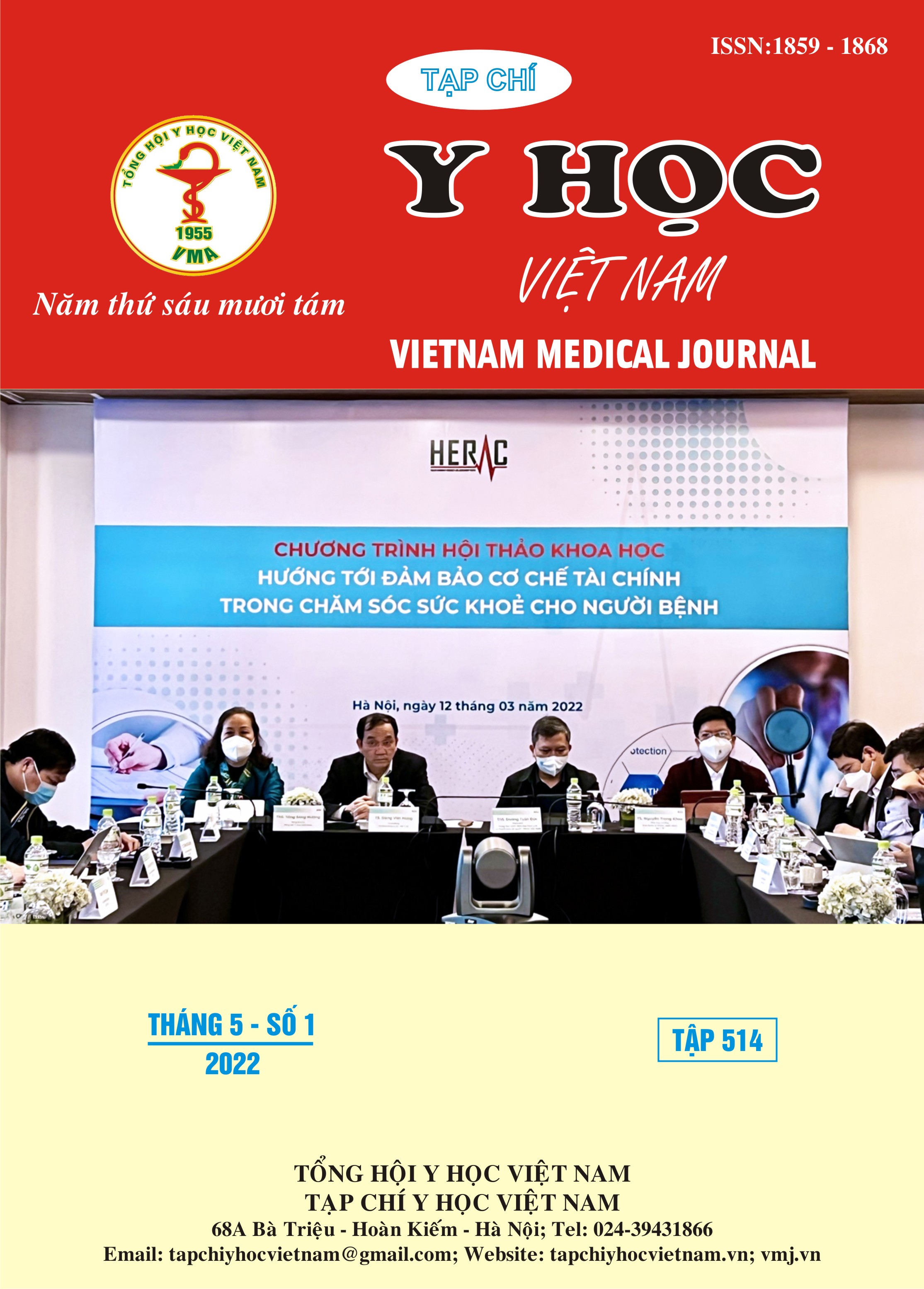TREATMENT OF SCHIZOAFFECTIVE DISORDER, DEPRESSIVE TYPE IN NATIONAL INSTITUTEOF MENTAL HEALTH INSTITUTE – BACH MAI HOSPITAL
Main Article Content
Abstract
The aims to describe the status of treatment in schizoaffective disorder, depressive type in National Institute of Mental Health - Bach Mai Hospital. This is a cross-sectional descriptive study, included 40 patients were diagnosed with schizoaffective, depressive type in National Institute of Mental Health, Bach Mai hospital. Result show that the patients with schizoaffective disorder, depressive type were more common in women (57.5%), aged 26-40 (52.5%). The most common antipsychotics used for this disorder was risperidone (60.0%), with a minimum dose of 2.9 ± 1.1 mg/day and a maximum dose of 4.2 ± 1.7 mg/day. Sertraline was the most common used antidepressant (90.0%) with the highest mean dose of 125 ± 52.8 mg/day. Diazepam was also used frequently (87.5%) with an average length of 11.3 ± 7.0 days. 100% of patients were treated with antipsychotics combined with one or more psychotropic medications. Most were the combination between an antipsychotic an antidepressants and a tranquilizers (70%). Most of the inpatient stayed in hospital in a period of time that ranged from 2 to 4 weeks (60.0%).
Article Details
Keywords
schizoaffective disorder, depressive type; treatment
References
2. Azorin JM, Kaladjian A, Fakra E. [Current issues on schizoaffective disorder]. L’Encephale. 2005;31(3):359-365. doi:10.1016/s0013-7006 (05) 82401-7
3. Lerner V, Libov I, Kotler M, Strous RD. Combination of “atypical” antipsychotic medication in the management of treatment-resistant schizophrenia and schizoaffective disorder. Prog Neuropsychopharmacol Biol Psychiatry. 2004;28 (1):89-98. doi:10.1016/j.pnpbp.2003.09.024
4. Cascade E, Kalali AH, Buckley P. Treatment of Schizoaffective Disorder. Psychiatry Edgmont. 2009;6(3):15-17.
5. Levinson DF, Umapathy C, Musthaq M. Treatment of schizoaffective disorder and schizophrenia with mood symptoms. Am J Psychiatry. 1999;156(8):1138-1148. doi:10.1176/ ajp.156.8.1138
6. Tollefson GD, Sanger TM, Lu Y, Thieme ME. Depressive signs and symptoms in schizophrenia: a prospective blinded trial of olanzapine and haloperidol. Arch Gen Psychiatry. 1998;55(3):250-258. doi:10.1001/archpsyc.55.3.250
7. Association AP. Diagnostic and Statistical Manual of Mental Disorders, 5th Edition: DSM-5. 5th edition. American Psychiatric Publishing; 2013.
8. Benabarre A, Vieta E, Colom F, Martínez-Arán A, Reinares M, Gastó C. Bipolar disorder, schizoaffective disorder and schizophrenia: epidemiologic, clinical and prognostic differences. Eur Psychiatry J Assoc Eur Psychiatr. 2001;16 (3):167-172. doi:10.1016/s0924-9338 (01) 00559-4
9. Ndetei DM, Khasakhala L, Meneghini L, Aillon JL. The relationship between schizoaffective, schizophrenic and mood disorders in patients admitted at Mathari Psychiatric Hospital, Nairobi, Kenya. Afr J Psychiatry. 2013;16(2):110-117. doi:10.4314/ajpsy.v16i2.14


